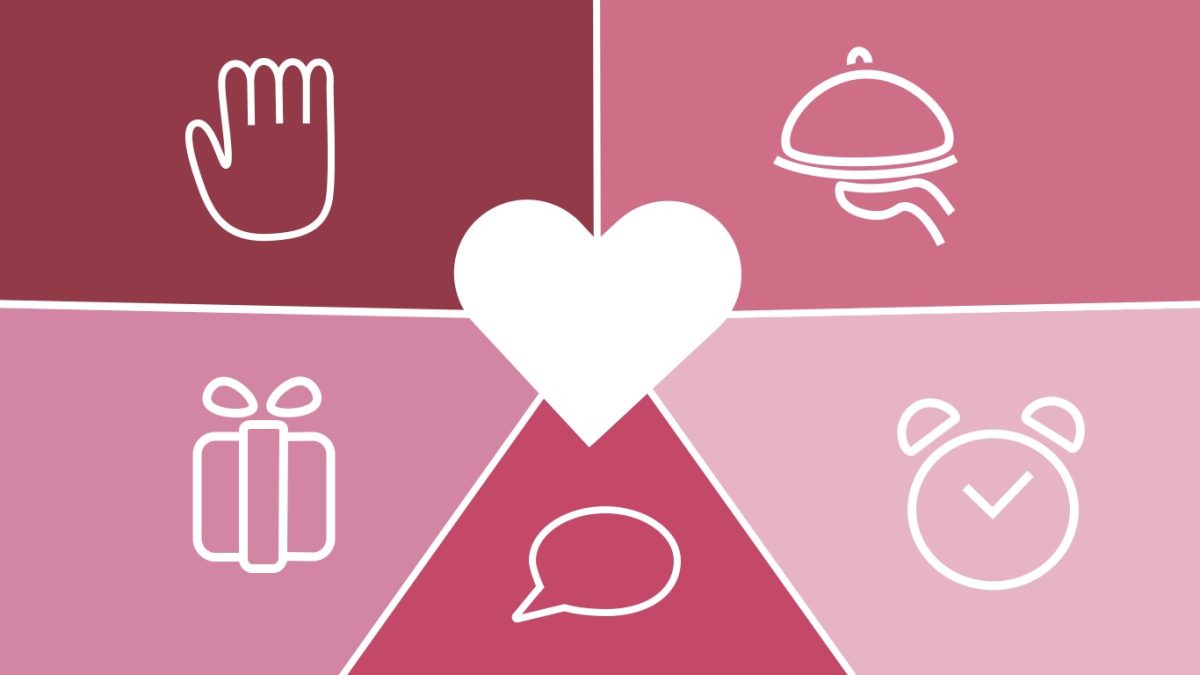Love makes us vulnerable. It makes us careless, devastates us and fills us with pride and happiness, powerful enough to rewire the brain. Love teaches us to put someone else’s needs before our own while maintaining our purpose and contentment. Love is so essential to the human race that it has become a language.
Theorist Gary Chapman first published the five primary love languages in 1992, defining the different ways of showing love to another person, specifically in romantic relationships. He introduced the five pillars of love: words of affirmation, acts of service, gift-giving, physical touch and quality time.
The chief critique of Chapman’s work is the lack of acknowledged self-love. Self-love promotes a positive mindset, increases our awareness when partaking in risky behavior and helps us gain compassion for ourselves. Self-love keeps us accountable. When we take the time to understand ourselves, we improve our mental fitness, which keeps the brain flexible.
Love languages apply not only to romantic relationships, but also to friendships and partnerships. There are differences between romantic and platonic relationships, but in either case, love is a verb. Love takes on different meanings for someone who appreciates words of affirmation or someone who appreciates it when their friends acknowledge their hard work or achievements.
Just sending a text can make someone’s day. Quality time in friendship is intentional listening and consistent engagement. Those who love to spend time with others appreciate friends who can put their phones away and engage in new thoughts.
Physical touch goes hand in hand with quality time. Those who enjoy a hug or back scratches are at ease when they receive physical touch from a friend. People who appreciate gifts and acts of service are more inclined to feel loved when someone brings them a small token from their day or completes a task on their to-do list unasked.
Psychologists argue that although valuable, Chapman’s research lacks scientific proof. After spending over 40 years as a pastor for the Baptist church, he developed a following as a theorist and marriage counselor. His book “The 5 Love Languages: The Secret to Love that Lasts” was based on observational studies of human behavior and society. He based the five love language identifications on the characteristics of love favored by the wide range of people he studied. However, scientists remain skeptical, as research shows that human expression can be categorized in more than five ways.
Over the last decade, the term “love language” has become a trend. #Lovelanguage has been applied to increasing content on TikTok and Instagram. However, the content breaks away from Chapman’s five love languages and displays people defining the languages that apply to their relationships and friendships.
The popular dating app Hinge has even used “My Love Language is” as a photo prompt for people to use when creating a profile. The millennial generation has rejected the confinements of Chapman’s love languages and has turned to their own identifiers like attention, arts, music and food.
It all boils down to compatibility. Speaking in different love languages is challenging, but the willingness to compromise is part of what makes love so immeasurably powerful. Love languages have evolved and as society continues to accept new normalities and generational differences, the language of love will continue to grow.



